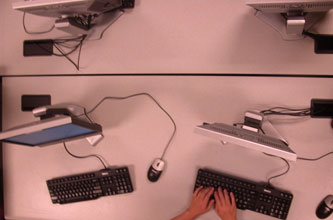
|
|||||||
|
Equally important, YouTube itself is not a promise of engaging and productive collaborative dialogue. The way that YouTube is used in classrooms and how the class is organized largely determine the effectiveness of YouTube videos. If the instructor does not invite conversation after the video is shared or if the instructor dominates the conversation in the classroom, reciprocal learning might not take place. Web 2.0 technology is featured with its potential to create democratic, collaborative learning; the key to maximizing such potential is de-centered learning where every participant’s voice is heard and valued. To fulfill this goal, the instructor should be aware of the importance of creating a non-threatening class atmosphere. YouTube, as a heterogeneous site that assimilates different voices, represents the interests of different groups. It allows people from different ethnic groups, cultural and political backgrounds to share their knowledge, attitudes, and opinions through dialogues. These dialogues, in turn, encourage students to articulate viewpoints, express opinions on opposing arguments, assess bias, evaluate strengths and weaknesses of each argument, and make their own judgments. Such interactions facilitate prewriting because they assist students to understand the social contexts of the topics, identify their audiences, and solicit feedback on their outlooks. The writing classroom that practices student centered pedagogy and incorporates YouTube in prewriting fosters genuine dialogues among class participants by promoting a non-threatening atmosphere, created as a result of YouTube’s non-hierarchical organization to decenter the instructor and mainstream voices. Though YouTube can potentially help instructors accomplish the goals discussed earlier, it has its pedagogical limitations. In order to show YouTube videos in class, the instructor needs to teach in a classroom that has at least a computer with an access to the Internet and a projector. The denial of such access will make video sharing in class difficult, thus impeding lively conversations from taking place. Without the on-site visual stimulus, YouTube loses its instant visual power on its audiences, resulting in students’ lack of interest in engaging in group discussions, thus diminishing YouTube’s potential to foster collaborative, interactive learning. As a tool to invite collaboration and interaction, YouTube loses much appeal if collaboration and interaction do not occur among class participants. To counteract this disadvantage, instructors can ask students to watch videos before coming to class. Though students cannot experience the visual and sound stimulus in the classroom together, they can come to class with notes and questions. They can also read relevant articles beforehand so that they can use the extra time saved in class from not sharing the video for brainstorming and generating ideas with peers. Meanwhile, as early discussions indicate, decentering the instructor and the mainstream voices is crucial to positive learning outcomes in class when YouTube is incorporated. One challenge to promote such positive learning outcomes is the unpreparedness of the instructors. Some instructors are new to Web 2.0 technology and new media composition teaching; they may feel it challenging to teach invention through YouTube. Though the appropriate uses of web 2.0 tools have a place in the development of curriculum innovation, teachers should not be encouraged to experiment with these tools without knowing the pedagogical implications. A strategy can be to hold workshops offered by departments or programs to prepare these instructors to use the network environment. As agents of change, educators have the responsibility to ensure a friendly, productive learning space for students and should understand how to utilize digital tools to accomplish democratic and collaborative learning in class. | |||||||
 The use of YouTube videos, when practiced in a classroom that respects students’ knowledge, allows dialogues as students question and debate with each other regardless of race, gender, and class. Hearing different views from people of different gender, race, and class might cause discomfort to some students, yet such discomfort allows students to question their own biases, and eventually recognize those who have been marginalized due to differences while liberating those who had biased assumptions. Therefore, the integration of YouTube during the invention stage potentially breaks down possible borders while creating a safe community for students to share their responses to the video. Meanwhile, conversing about how videos, images, and words work together to create meaning, students understand digital literacy so that they can also use sounds, images, and words in their essays to produce multimodal texts that appeal to targeted audiences. Hence, in this space, conflicting opinions are discussed, personal experiences are shared, students’ knowledge is recognized, and differences are embraced, leading to positive growth and learning.
The use of YouTube videos, when practiced in a classroom that respects students’ knowledge, allows dialogues as students question and debate with each other regardless of race, gender, and class. Hearing different views from people of different gender, race, and class might cause discomfort to some students, yet such discomfort allows students to question their own biases, and eventually recognize those who have been marginalized due to differences while liberating those who had biased assumptions. Therefore, the integration of YouTube during the invention stage potentially breaks down possible borders while creating a safe community for students to share their responses to the video. Meanwhile, conversing about how videos, images, and words work together to create meaning, students understand digital literacy so that they can also use sounds, images, and words in their essays to produce multimodal texts that appeal to targeted audiences. Hence, in this space, conflicting opinions are discussed, personal experiences are shared, students’ knowledge is recognized, and differences are embraced, leading to positive growth and learning.